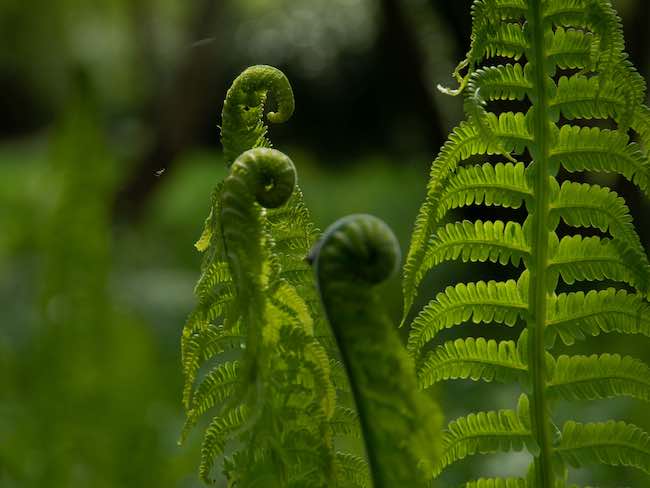
There are several suitable foliage plants that can thrive in a UK garden during the summer. Here are a few options:
Hostas (Hosta spp.): Hostas are popular foliage plants known for their large, textured leaves that come in a variety of colours, including shades of green, blue, and variegated patterns. They prefer partial shade and moist soil.
Heucheras (Heuchera spp.): Heucheras, also known as coral bells, are versatile plants with vibrant foliage in shades of green, purple, silver, or bronze. They can tolerate both sun and shade, but they tend to have better colouration in partial shade.
Ferns (Dryopteris spp.): Ferns are excellent choices for shady spots in the garden. They have delicate, feathery fronds that add a lush and tropical feel. Some common fern varieties include the Lady Fern (Athyrium filix-femina) and the Japanese Painted Fern (Athyrium niponicum).
Hakonechloa (Hakonechloa macra): Hakonechloa is a graceful ornamental grass with cascading, arching leaves that provide a beautiful contrast to other plants. It thrives in partial shade and moist, well-drained soil.
Japanese Forest Grass (Miscanthus sinensis ‘Variegatus’): This ornamental grass has attractive variegated leaves with creamy-white stripes. It prefers partial shade and moist soil.
Astilbes (Astilbe spp.): Astilbes produce elegant plumes of flowers, but their foliage is equally attractive. The feathery, fern-like leaves come in various shades of green, bronze, and reddish-bronze. They prefer moist soil and partial shade.
Pulmonarias (Pulmonaria spp.): Pulmonarias, also known as lungworts, have attractive foliage with silver or variegated patterns. They often have colourful flowers too. They thrive in partial shade and well-drained soil.
Brunnera (Brunnera macrophylla): Brunnera is a shade-loving plant with heart-shaped leaves that have silver or variegated patterns. It produces clusters of small blue flowers in spring. It prefers moist soil and partial shade.
Remember to consider the specific growing conditions in your garden, such as sunlight exposure and soil type, when selecting plants. Additionally, it’s always a good idea to check the hardiness zone and the specific requirements of the plants you choose to ensure they are suitable for your region in the UK.





















